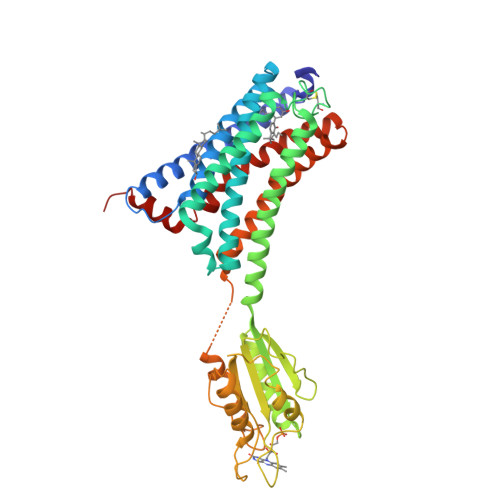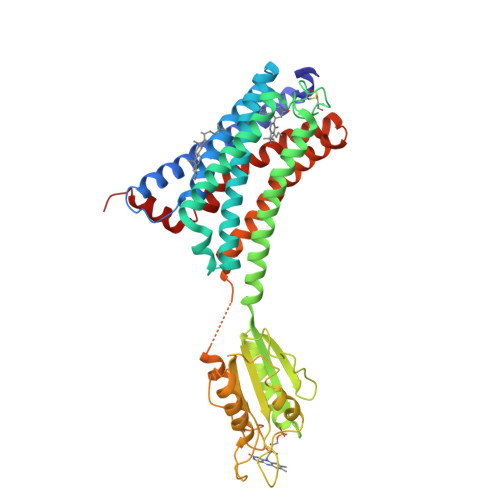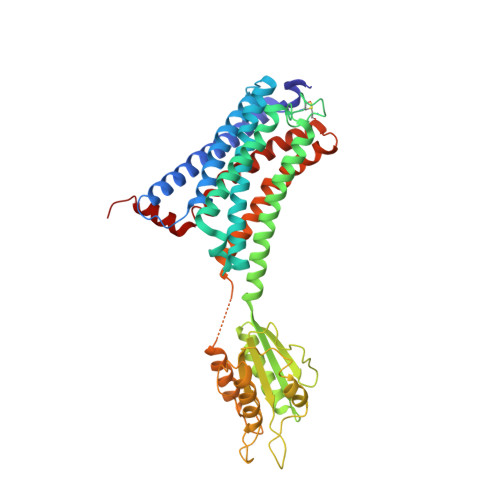A Genetically Encoded F-19 NMR Probe Reveals the Allosteric Modulation Mechanism of Cannabinoid Receptor 1.
Wang, X., Liu, D., Shen, L., Li, F., Li, Y., Yang, L., Xu, T., Tao, H., Yao, D., Wu, L., Hirata, K., Bohn, L.M., Makriyannis, A., Liu, X., Hua, T., Liu, Z.J., Wang, J.(2021) J Am Chem Soc 143: 16320-16325
- PubMed: 34596399
- DOI: https://doi.org/10.1021/jacs.1c06847
- Primary Citation of Related Structures:
7V3Z - PubMed Abstract:
Due to the lack of genetically encoded probes for fluorine-19 nuclear magnetic resonance spectroscopy ( 19 F NMR), its utility for probing eukaryotic membrane protein dynamics is limited. Here we report an efficient method for the genetic incorporation of an unnatural amino acid (UAA), 3'-trifluoromenthyl-phenylalanine (mtfF), into cannabinoid receptor 1 (CB1) in the Baculovirus Expression System. The probe can be inserted at any environmentally sensitive site, while causing minimal structural perturbation to the target protein. Using 19 F NMR and X-ray crystallography methods, we discovered that the allosteric modulator Org27569 and agonists synergistically stabilize a previously unrecognized pre-active state. An allosteric modulation model is proposed to explain Org27569's distinct behavior. We demonstrate that our site-specific 19 F NMR labeling method is a powerful tool in decoding the mechanism of GPCR allosteric modulation. This new method should be broadly applicable for uncovering conformational states for many important eukaryotic membrane proteins.
Organizational Affiliation:
iHuman Institute, ShanghaiTech University, Shanghai 201210, China.



















